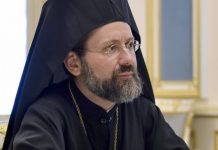Earlier this month the Congregation for the Evangelization of Peoples sent a letter to the bishops of some 1,100 Catholic territories and announced the gradual reduction of the financial support they regularly receive from the Vatican.
Since apostolic vicariates and prelatures are regarded by the Vatican as mission territories, they fall under the jurisdiction of the Congregation for the Evangelization of Peoples, and the vast majority of them are in the poorest parts of the world.
The Vatican has traditionally supported these jurisdictions via the “Universal Solidarity Fund” of the Pontifical Mission Societies. The main source of income of the fund comes from the collection of World Mission Sunday, celebrated every year on the second to last Sunday of October. The fund is independent from the Congregation for the Evangelization of Peoples.
But some bishops’ conferences in Latin America contacted by CNA claim that the local nuncios have announced a significant cut in the Vatican financial support and have requested local bishops from non-missionary territories to make up for the difference.
Speaking with CNA on Jan. 20, Archbishop Giampietro Dal Toso, adjunct secretary of the Congregation for the Evangelization of Peoples and president of the Pontifical Mission Societies, stressed that “the letter is in no way intended to cut the support we are giving to the diocesan missions. It instead aims at a better distribution of the money, following the criteria of stewardship.”
It means, he explained, that “if there are dioceses or bishops able to carry on with their resources, they could renounce to their share and give the opportunity to other, poorest dioceses to get more.”
Archbishop Dal Toso stressed that “along with Aid to the Church in Need, the Pontifical Mission Societies only support pastoral projects. This is very important for the future of the Church.” By pastoral, the archbishop means funds that go to specific expenses related to the work of evangelization, as opposed to social justice funds, which are usually more readily available.
According to 2016 figures, the Congregation (also known with the Latin name of Propaganda Fide) has jurisdiction over 186 archdioceses, 785 dioceses, 82 apostolic vicariates, 39 apostolic prefectures, 4 apostolic administrations, 6 missiones sui iuris, 1 territorial abbacy, and 6 military ordinariates.
In 2019 the Societies distributed some $130 million, all of it collected during World Mission Sunday. There are no figures regarding the 2020 collection, but Dal Toso said he expects to collect less money than in 2019, because of the economic crisis as a consequence of COVID 19.
The financial support to each diocese varies according to factors such as the poverty of the region, the exchange rate of hard currency and specific needs, but the average annual support is around $20,000.
According to Archbishop Dal Toso, although the numbers might not seem that big, the money delivered by the Mission Societies is very significant for the missionary territories.
The Vatican, for example, delivers an average of $460 per month to every seminarian on missionary territory.
The Mission Societies also provide financial support to retired bishops, which is very important in poor regions where Catholics are a minority and the local community cannot afford supporting them.
Archbishop Dal Toso said that the letter sent to the missionary territories is asking whether some of these bishops could renounce such financial aid.
“This is not new, since the Congregation delivered a similar request in 2015, and some 30 bishops were able to renounce to the financial support,” Dal Toso said.















